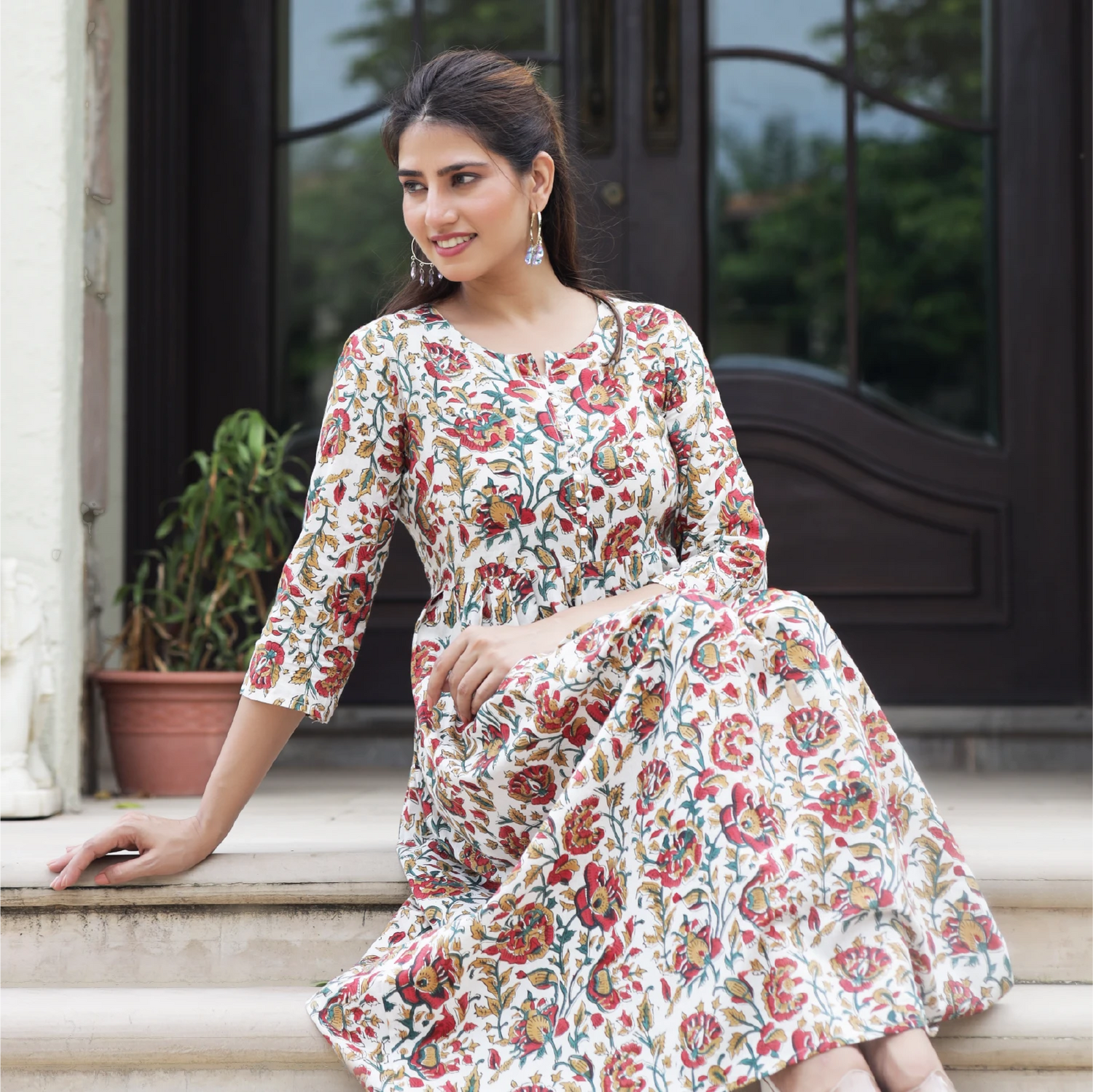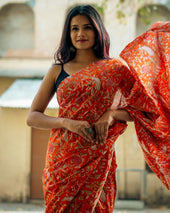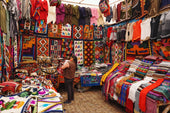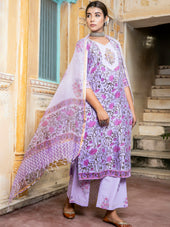
Master Hand Block Printing Techniques: An Insider's Guide
Share
Hand block printing, an ancient craft rooted deeply in the cultural heritage of India, is a testament to the meticulous artistry and rich traditions of the region. This technique, which involves using hand-carved wooden blocks to print designs on fabric, has captivated the world with its intricate patterns and vibrant colors. For women who cherish authenticity and tradition in fashion, understanding the nuances of hand block printing can enhance the appreciation for these timeless textiles.
The Origins of Hand Block Printing
Hand block printing has been practiced in India for centuries, with regions like Rajasthan and Gujarat being the epicenters of this art. The process begins with skilled artisans carving intricate designs onto wooden blocks. These blocks are then used to stamp patterns onto fabric, creating unique, one-of-a-kind prints. Historically, these prints often depicted motifs inspired by nature, such as flowers, leaves, and animals, reflecting the artisans' surroundings and cultural narratives.
The Process of Hand Block Printing
-
Designing and Carving the Blocks: The first step in hand block printing is designing and carving the wooden blocks. Each design element requires a separate block, meticulously carved by master craftsmen. The precision and detail in these carvings directly influence the quality and clarity of the print.
-
Preparing the Fabric: The fabric, typically cotton, is washed thoroughly to remove any impurities that could interfere with the dyeing process. It is then soaked in a mixture of water and a natural mordant, which helps the dye adhere to the fabric.
-
Dye Preparation: Traditional hand block printing uses natural dyes derived from plants, minerals, and other natural sources. These dyes are prepared by boiling the ingredients and filtering the mixture to achieve the desired color intensity.
-
Printing: The prepared blocks are dipped into the dye and stamped onto the fabric with careful precision. Artisans often use multiple blocks for a single design, layering colors and patterns to create complex and detailed prints. Each block must be pressed with consistent pressure to ensure an even print.
-
Drying and Fixing the Print: After printing, the fabric is left to dry in the sun. Once dry, it undergoes a fixing process, often involving steaming or boiling, to ensure the colors are set and will not fade with washing.
Techniques in Hand Block Printing
-
Bagru Printing: Originating from the town of Bagru in Rajasthan, this technique uses natural dyes and a resist method involving mud paste to create intricate patterns. The fabric is first dyed in a base color, then covered with a mud paste in the desired pattern. Once dry, the fabric is dyed again, with the mud acting as a resist, resulting in a two-tone design.
-
Dabu Printing: Similar to Bagru, Dabu printing involves using a mud resist, but with more intricate designs and often using indigo dye. The fabric is stamped with a mud paste, sprinkled with sawdust to prevent smudging, and then dyed. Multiple layers of paste and dye can be applied to create complex, multi-colored patterns.
-
Ajrakh Printing: This technique, popular in Gujarat and Rajasthan, involves a lengthy process of resist dyeing and over-dyeing using natural dyes. Ajrakh prints are characterized by their symmetrical patterns and rich, deep colors, often in shades of indigo, red, and black.
The Allure of Hand Block Printed Fabrics
Hand block printed fabrics offer a unique blend of traditional craftsmanship and contemporary appeal. Each piece tells a story of the artisan's skill and creativity, making it a perfect choice for women who appreciate both style and heritage. The slight imperfections inherent in hand block printing add to the charm, ensuring that no two pieces are exactly alike.
Moreover, the use of natural dyes and sustainable practices in hand block printing aligns with the growing demand for eco-friendly and ethical fashion. Choosing hand block printed textiles supports local artisans and helps preserve this centuries-old craft.
Incorporating Hand Block Printed Fabrics into Your Wardrobe
-
Casual Wear: Hand block printed kurtis and tops are perfect for casual outings. Pair them with jeans or leggings for a comfortable yet stylish look.
-
Formal Wear: For a more formal setting, opt for hand block printed sarees or salwar suits. The intricate designs and rich colors can make a statement at any event.
-
Home Decor: Hand block printed fabrics are not limited to clothing. Incorporate them into your home with printed bedspreads, curtains, and cushion covers to add a touch of elegance and cultural heritage to your living space.
Conclusion
Hand block printing is more than just a textile art; it's a celebration of tradition, craftsmanship, and sustainability. For women who value authenticity and elegance, hand block printed fabrics offer a timeless appeal. By understanding and appreciating the intricate process behind these prints, you can make informed and meaningful choices in your fashion and home decor.
Exploring the world of hand block printing can be a rewarding journey, revealing the depth of skill and artistry that goes into every piece. Whether you're wearing a hand block printed kurti or adorning your home with printed fabrics, you're not just embracing a style but a rich cultural legacy.























































